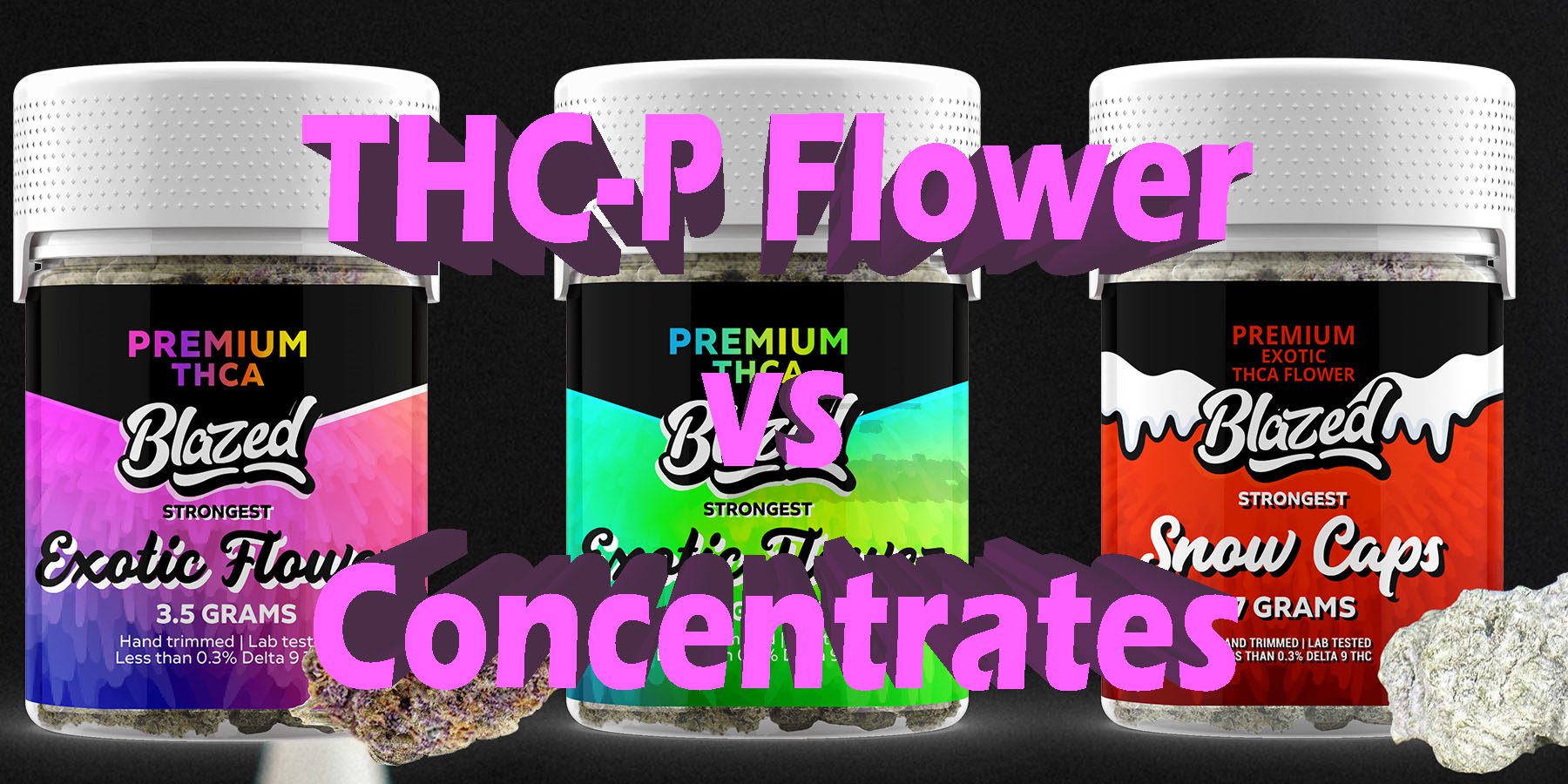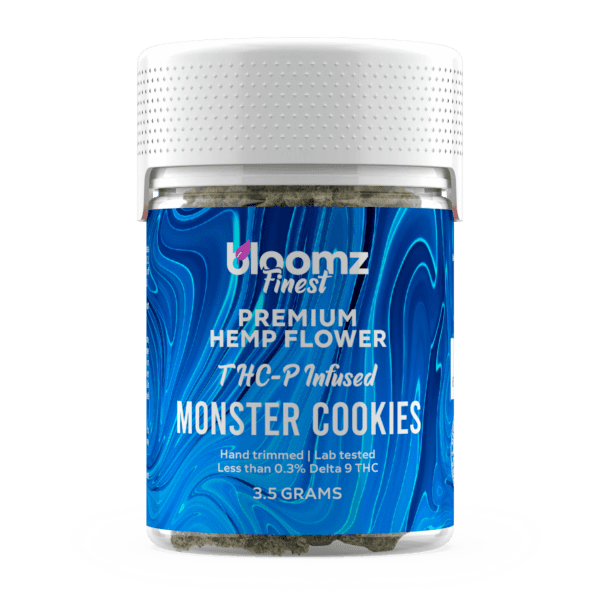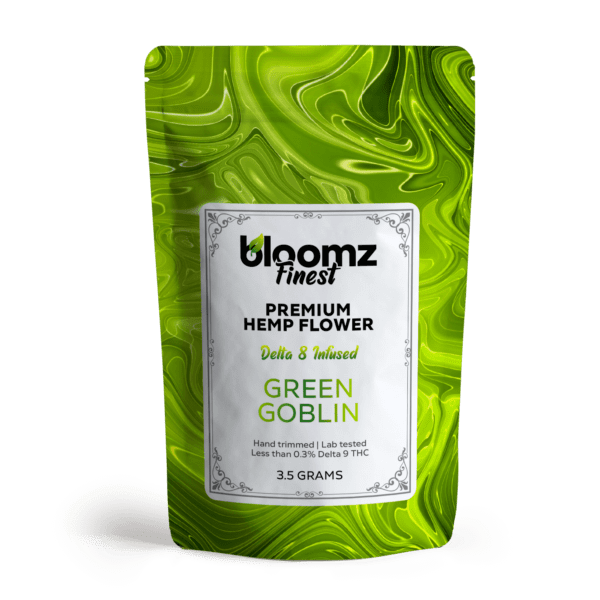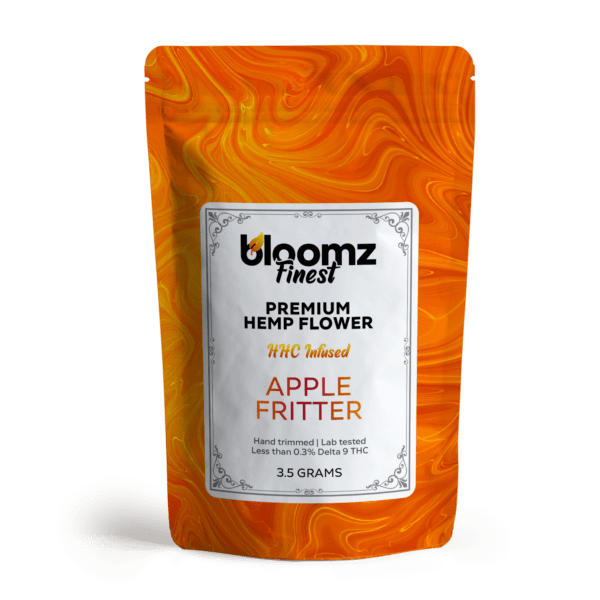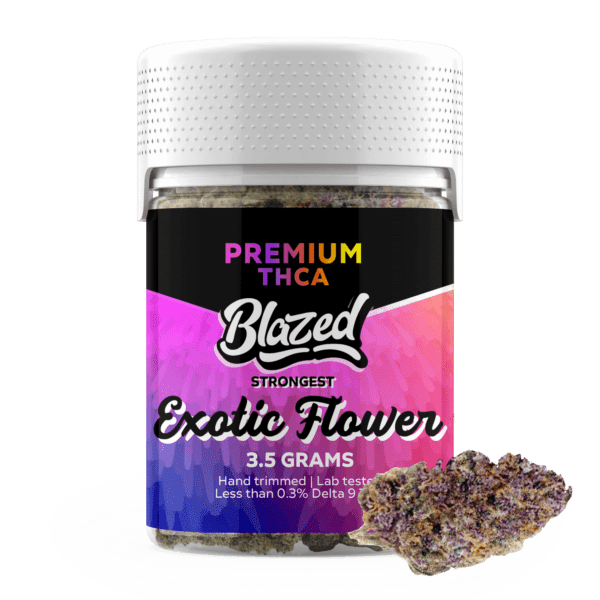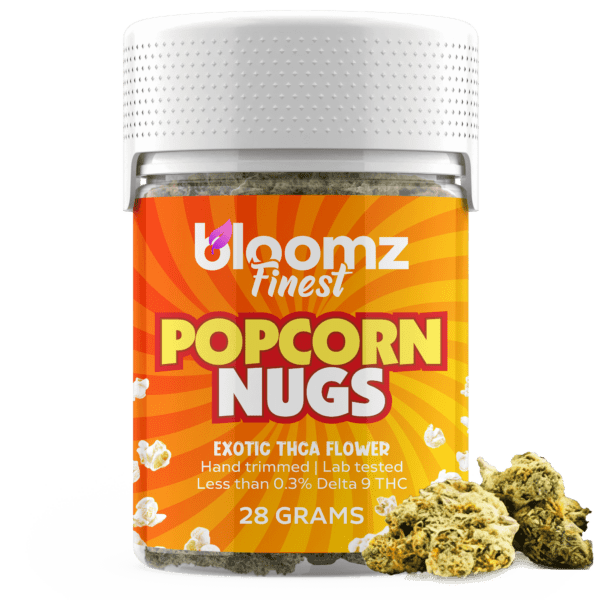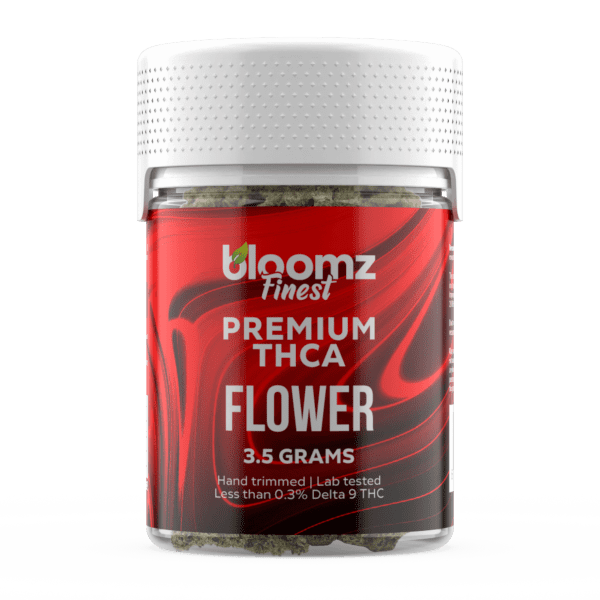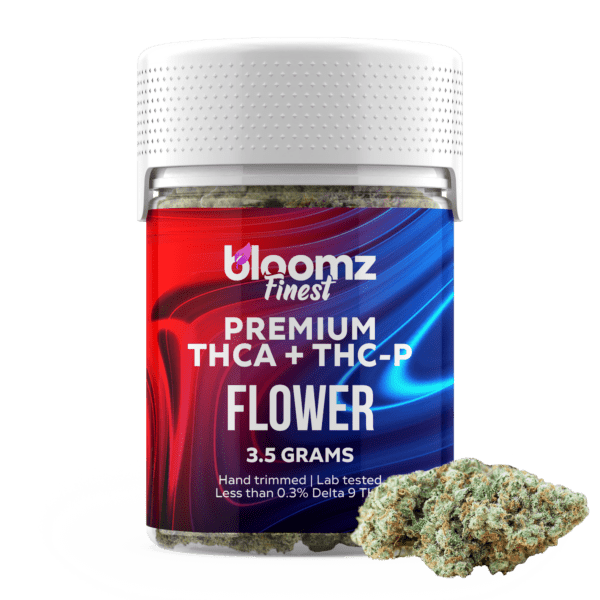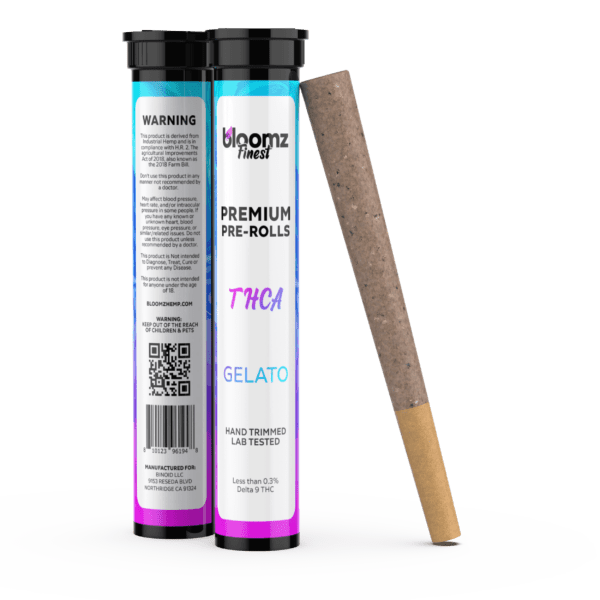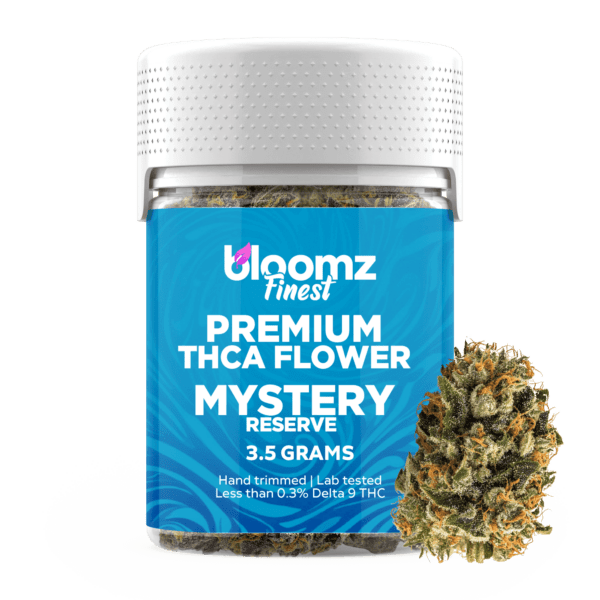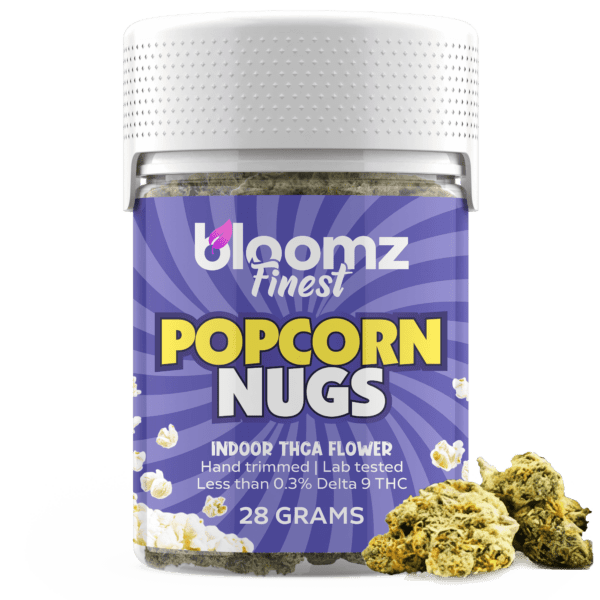In the vibrant and ever-expanding universe of hemp-derived products, a fundamental choice confronts both the curious newcomer and the seasoned connoisseur: to embrace a clever fusion of the traditional plant form with modern science, or to explore the very essence of that same plant, refined and amplified to its most powerful state. This decision charts a course between two distinct philosophies of consumption, each with its own unique rituals, sensations, and profound character. On one side of this great divide stands the innovative THC-P flower, a product that marries the familiar, tactile experience of a botanical bud with the famously potent effects of a lab-derived cannabinoid.
On the other side lies the dazzling and diverse world of concentrates, a testament to the alchemical power of extraction and purification, presenting the plant’s most potent compounds in a breathtaking variety of powerful and pristine forms. Navigating this choice is not merely about selecting a product; it is about defining an experience and aligning it with one’s own personal preferences for flavor, potency, and process.
TO BUY THC-P FLOWER CLICK HERE
Recommended products
Why It’s Important to Breakdown the Matchup of THC-P Flower vs. Concentrates
A detailed and thorough breakdown of the matchup between the novel THC-P flower and the vast world of concentrates is not just helpful; it is an essential exercise in responsible and informed consumption. The differences between these two categories are vast and fundamental, extending far beyond simple potency to encompass the entire user experience, from the necessary equipment and preparation to the very nature of the effects themselves. Given that THC-P is a cannabinoid of exceptional potency, understanding its delivery systems is paramount for a safe and enjoyable experience.
By carefully dissecting the nuances of each—the composite, full-plant experience of an infused flower versus the direct, powerful, and targeted impact of a pure concentrate—we provide consumers with the critical knowledge needed to align their choice with their tolerance, lifestyle, and desired outcomes. This exploration is not about establishing a universal hierarchy of quality, but rather about illuminating the unique virtues and specific, crucial considerations of each path, ensuring every person can confidently select the form that best suits their needs.
This in-depth comparison is critical for several key reasons that go to the heart of the user experience. Firstly, it addresses the significant difference in potency and the user’s tolerance. Both categories are known for high potency, but the nature of that potency differs. THC-P flower‘s effects are moderated by the base flower, while a pure concentrate like THC-P diamonds offers an unadulterated, intense experience. Secondly, the conversation must cover the vast disparity in required hardware and the associated learning curve.
Consuming THC-P flower can be as simple as using a basic pipe, while properly consuming many concentrates requires specialized and sometimes intimidating equipment like a dab rig and torch. Furthermore, the economic considerations are vastly different; while concentrates are more expensive per gram, their high efficiency means a small amount goes a very long way. By carefully dissecting these factors, along with nuances in flavor, onset time, and duration of effects, we provide a complete and transparent picture, transforming a potentially overwhelming choice into a clear and calculated personal decision.
Contender #1: THC-P Flower
In the innovative and rapidly evolving world of hemp products, THC-P flower emerges as a truly unique and powerful contender, representing a masterful fusion of the timeless, cherished form of the hemp plant with the absolute cutting edge of cannabinoid science. This product is specifically designed to appeal to those who love the classic, hands-on ritual of handling and consuming flower—the grinding, the packing, the aromatic release—but who are also experienced users seeking an effect that transcends the ordinary, venturing into new realms of potency and profundity.
It is crucial to understand from the outset that THC-P flower is not a product of natural cultivation; there is no hemp or cannabis plant that naturally grows buds rich in this exceptionally potent cannabinoid. Instead, it is a carefully manufactured product, a testament to scientific ingenuity where a base of natural hemp flower is artfully infused with the powerful essence of pure THC-P. It offers a bridge between two worlds, providing a familiar and comfortable form factor while delivering a distinctly modern and profoundly powerful effect.
To start, tetrahydrocannabiphorol (THC-P) is a naturally occurring but extremely rare cannabinoid that was first identified by a team of Italian researchers in late 2019. Its discovery sent waves through the cannabis science community due to its unique molecular structure and its astonishingly high potency. Like its famous cousin, Delta 9 THC, THC-P is an intoxicating compound that interacts with the body’s endocannabinoid system. However, the key difference, and the source of its immense power, lies in its alkyl side chain. The Delta 9 THC molecule has an alkyl side chain with five carbon atoms (a pentyl chain).
In a remarkable structural variance, the THC-P molecule possesses a longer alkyl side chain with seven carbon atoms (a heptyl chain). This seemingly small difference in length has a dramatic impact on how effectively the molecule can bind to the primary cannabinoid receptors in the human brain, the CB1 and CB2 receptors. Scientific studies have suggested that this seven-carbon chain allows THC-P to bind to the CB1 receptor with over 30x the affinity of Delta 9 THC. While this does not mean it is 30 times stronger in a straightforward experiential sense, it does translate to a psychoactive effect that is significantly more potent, profound, and often longer-lasting than that of any other naturally occurring cannabinoid discovered to date.
THC-P flower is a sophisticated, composite product created by taking high-quality, legally compliant hemp flower and meticulously infusing it with a pure, potent THC-P distillate. In essence, the process begins with a beautiful, aromatic, and cannabinoid-rich hemp bud—typically a strain high in CBD or CBG—which then serves as a natural vessel and a full-spectrum base for the exceptionally powerful THC-P. This innovative manufacturing process allows producers to offer a smokable flower that provides the unique and profound effects of THC-P, which would otherwise be impossible to achieve through cultivation alone, as the hemp plant produces this cannabinoid in only microscopic, non-viable quantities.
The final product looks, smells, and feels very much like a traditional top-shelf cannabis bud, but its extraordinary psychoactive properties are derived entirely from the scientifically applied THC-P distillate. The ultimate quality of the final product is therefore a direct reflection of two critical factors: the quality of the base hemp flower and the purity and precision of the THC-P infusion method.
Recommended products
The journey from a simple hemp plant to a consumer-ready, ultra-potent THC-P-infused bud follows a carefully orchestrated, multi-stage protocol that marries agricultural art with laboratory science:
Cultivation and Curation of Premium Hemp Flower: The foundation of any elite THC-P flower is the base flower itself. Reputable producers begin by cultivating or sourcing the finest top-shelf hemp flower available. This typically involves selecting strains that are rich in CBD or CBG and that boast a desirable aesthetic, a dense and well-formed bud structure, and a robust profile of natural, aromatic terpenes. This base flower must be fully compliant with the 2018 Farm Bill, containing less than 0.3% Delta 9 THC. The quality of this starting material is absolutely paramount, as its natural aroma, flavor, and minor cannabinoid content will form the sensory and synergistic backbone of the final product, helping to shape and moderate the powerful effects of the THC-P.
Synthesis and Purification of THC-P Distillate: Since THC-P is far too rare to be extracted directly from the plant in viable quantities, it must be created in a laboratory through a complex chemical process. This process typically starts with a more abundant cannabinoid, usually CBD isolate or even Delta 8 THC, which is extracted from legal hemp. This starting material is then subjected to a series of chemical reactions, often involving catalysts and precise temperature control, in a process known as isomerization or other synthetic pathways. This converts the molecules into THC-P. After the reaction is complete, the resulting crude oil must undergo an extensive process of refinement and distillation to remove all residual solvents, acids, and byproducts, resulting in a pure, thick, and incredibly potent THC-P distillate that is safe for consumption.
The Precision Infusion Process: This is the most crucial and delicate step, where the flower and the ultra-potent distillate are combined. The thick THC-P distillate is first gently heated to lower its viscosity, making it more workable. It is often diluted slightly with natural terpenes to ensure it can be applied evenly without creating “hot spots” of concentrated potency. One of the most common and effective methods for application is spraying, where the warm distillate is atomized into a fine mist and sprayed evenly over the buds as they are gently tumbled. Another advanced method involves a cryogenic infusion, where the flower is flash-frozen with liquid nitrogen before the distillate is applied. This makes the flower less fragile and helps the oil adhere evenly without oversaturating the bud, preserving its natural texture and appearance.
Final Curing, Testing, and Quality Assurance: After the infusion process, the newly coated flower is allowed to undergo a final curing stage. This resting and drying period is essential to ensure that any carrier solvents or excess moisture have fully evaporated, leaving the flower with a pleasant, non-sticky texture that is suitable for grinding and smoking. Finally, as the most critical step for consumer safety, a representative sample from each and every batch of the finished THC-P flower is sent to an independent, accredited third-party laboratory. This lab provides a comprehensive Certificate of Analysis (COA) that verifies the final THC-P potency and, most importantly, confirms that the product is free from harmful contaminants like pesticides, heavy metals, and any residual solvents left over from the synthesis and infusion processes.
In terms of the market for THC-P flower, it offers a variety of options that are primarily distinguished by the quality and cultivation method of the base hemp flower used, as well as the specific methods of infusion and enhancement. It’s essential for consumers to understand that terms like “indoor” and “outdoor” do not refer to how the THC-P itself was grown (as it is lab-created), but rather describe the origin of the underlying, non-intoxicating hemp flower before it was treated with the potent distillate. This distinction is key to navigating the different product tiers and finding the quality that best aligns with one’s preferences and budget. From pristine, visually stunning indoor buds to unimaginably potent, multi-layered moonrocks, the variety allows for a wide range of experiences at the very peak of potency:
Indoor THC-P Flower: This represents the absolute top-shelf, connoisseur-grade category of THC-P flower. The process begins with the finest premium, indoor-grown hemp flower, which is celebrated for its flawless bud structure, extreme density, vibrant coloration, and a rich, complex profile of carefully preserved terpenes. This exceptionally high-quality base is then meticulously infused with pure THC-P distillate. The final product boasts the best of both worlds: the beautiful appearance and complex natural aroma of indoor-grown hemp, combined with the profound and powerful effects of THC-P. This is the definitive choice for experienced users who prioritize aesthetic quality and a robust, natural flavor profile to accompany the intense experience.
Outdoor THC-P Flower: This category utilizes hemp flower that was cultivated in a natural, outdoor environment under the sun. Outdoor-grown hemp often has larger, slightly less dense buds with a more rustic appearance and a characteristically earthier terpene profile, influenced by the soil and climate in which it was grown. While it may not have the same pristine, manicured “bag appeal” as its indoor counterpart, it provides a more cost-effective base material for the infusion process. Once infused with THC-P, this flower offers a more budget-friendly option for consumers who are primarily focused on experiencing the powerful effects of the cannabinoid and are less concerned with the nuanced aesthetics of the bud itself.
THC-P Nugs: This is the standard form of THC-P flower, referring to the full-sized, trimmed buds (whether indoor or outdoor grown) that have been infused with the distillate. These nugs showcase the structure and quality of the base flower and provide the classic tactile experience of admiring and breaking down a bud by hand before consumption. This is the most common format available and offers a great balance of quality, value, and user experience for those venturing into the world of THC-P.
THC-P Moonrocks: This is an exceptionally potent, triple-layered, enhanced product designed for the most experienced users seeking the absolute maximum in potency. The creation of a THC-P moonrock is an intensive and meticulous process. First, a premium nug of hemp flower (usually indoor-grown) is selected as the core. Second, it is gently heated and completely coated in a sticky layer of potent THC-P distillate. Third, while the distillate is still tacky, the entire bud is thoroughly rolled in a generous amount of kief (the sifted, cannabinoid-rich trichomes from hemp flower, often high in CBD or CBG). This powerful trifecta of flower, distillate, and kief results in an incredibly dense, slow-burning, and overwhelmingly potent product that delivers a profound and multi-layered cannabinoid experience.
THC-P Pre-Rolls, Blunts & Joints: For the ultimate in convenience and for those who may be hesitant to handle such a potent flower directly, pre-rolled options are a popular choice. These products consist of ground-up THC-P flower that has been expertly weighed and packed by a machine into either standard rolling papers (joints) or larger, tobacco-free hemp wraps (blunts). This eliminates the need for the consumer to own a grinder or papers, and it provides a pre-portioned, ready-to-use, and easily shareable format for a classic smoking experience, which can also help in managing the powerful dosage.
The concept of “strains” when applied to a manufactured product like THC-P flower is a nuanced and multi-layered topic that requires a clear understanding of its composite nature. The final product’s character and overall experiential profile are a combination of two distinct elements: the genetic strain of the base hemp flower and the powerful, overarching psychoactive properties of the THC-P distillate that is applied to it. The base flower, which is typically a high-CBD or high-CBG strain, is carefully selected by the manufacturer for its unique and desirable terpene profile, which is what dictates the product’s fundamental aroma and flavor. These terpene profiles are generally categorized into the three familiar classifications:
Indica: To create an Indica-dominant THC-P flower, producers begin with a base hemp strain that is genetically predisposed to produce a relaxing and calming terpene profile, rich in aromatic compounds like myrcene (earthy, musky), linalool (floral, lavender), and beta-caryophyllene (peppery, spicy). These strains often possess deep, earthy, sweet, or fruity aromas. When this terpene-rich flower is infused with the powerful THC-P distillate, the result is an experience that is profoundly relaxing, deeply tranquil, and often very body-centric. The calming terpenes of the flower synergize with the intense euphoria of the THC-P to produce a blissful, enveloping sensation that is best reserved for evening use, quiet reflection, or settling into a state of deep, chilled-out comfort.
Sativa: For a Sativa-dominant THC-P flower, the base material is a hemp strain that has been specifically bred to produce an uplifting and energizing terpene profile, high in more volatile and stimulating compounds like limonene (bright, citrusy) and pinene (sharp, fresh pine). These strains typically boast vibrant, zesty, or invigorating aromas. When this aromatic flower is combined with the potent THC-P distillate, the resulting effect is often described as intensely stimulating, creatively inspiring, and powerfully euphoric. It is a choice for experienced users seeking a profound daytime experience, a powerful companion for artistic endeavors, or an intense surge of euphoric energy.
Hybrid: Hybrid THC-P flower offers the most balanced and versatile experience within this high-potency category. It starts with a base hemp strain that has been expertly cross-bred to exhibit a well-rounded and multifaceted profile of both relaxing and uplifting terpenes. These strains can be Indica-dominant, Sativa-dominant, or a true 50/50 blend, offering a complex aromatic and flavor foundation. Infusing these multifaceted flowers with THC-P creates a comprehensive effect that can provide a powerful and soaring mental uplift alongside a comfortable and profound body sensation. This adaptability makes hybrid THC-P flower a popular, albeit still incredibly potent, choice for a wide range of situations.
Now, THC-P flower’s legal status here in the United States is a complex and evolving issue that exists in a gray area of federal and state law. At the federal level, its potential legality is derived from the 2018 Agriculture Improvement Act, more commonly known as the 2018 Farm Bill. This landmark legislation legalized hemp and all of its derivatives, isomers, and cannabinoids, with the crucial stipulation that the final product must contain a Delta 9 THC concentration of no more than 0.3% by dry weight. Since THC-P is a naturally occurring (albeit rare) cannabinoid found in the hemp plant, and the flower itself is made from a compliant hemp base, proponents argue that it is a legal hemp derivative under this definition. This is the interpretation that allows for its sale in many parts of the country.
However, this federal standing is far from certain and is challenged by several factors. The Drug Enforcement Administration (DEA) has suggested that any cannabinoids created “synthetically” could fall outside the protections of the Farm Bill. Since THC-P must be created in a lab via chemical conversion from other cannabinoids to be commercially viable, its status as “synthetic” is a major point of legal contention. Furthermore, the Federal Analogue Act could potentially be used to classify THC-P as an analogue of the federally illegal Delta 9 THC.
More importantly, many individual states have begun to pass their own, more restrictive laws. In an effort to address the rise of potent, intoxicating hemp products, a number of states have explicitly banned or regulated THC-P and other novel cannabinoids, regardless of their federal status. This has created a fractured and confusing legal landscape where THC-P flower may be available in one state but is considered an illegal substance in another. Therefore, it is absolutely essential for consumers to thoroughly research and verify the specific laws regarding THC-P in their own state before making any purchase.
Recommended products
THC-P flower’s allows it to be used in all the same ways as traditional cannabis or hemp flower, providing experienced users with a range of consumption methods to fit their preferences and available equipment, such as:
Vaping (using a portable or desktop vaporizer): For those who want to experience the flavor profile of the base hemp flower with greater clarity and potentially a slightly more manageable onset, vaporizing is an excellent option. Using a dry herb vaporizer, a very small amount of the THC-P flower is heated to a temperature that is hot enough to vaporize the THC-P and the terpenes, but not hot enough to cause combustion. This produces a smooth vapor instead of smoke, which is often considered less harsh. This method is praised for its efficiency and for providing a cleaner taste, but it is crucial to start with the smallest possible amount, perhaps just a single inhalation, and wait at least 20-30 minutes to gauge the full effect.
Smoking: This remains the most common and straightforward method of consuming THC-P flower. It involves grinding a small amount of the bud and igniting it in a pipe, a water pipe (bong), or by rolling it into a joint (often mixed with regular CBD flower to dilute the potency). The act of smoking is a familiar ritual for many, offering an immediate onset of effects. However, with THC-P, this immediacy can be deceptive, as the effects can continue to build in intensity for some time after the initial consumption. Extreme caution is advised; starting with a tiny puff and waiting is the only responsible approach.
Cooking/Baking: THC-P flower can also be used to create homemade edibles, but this should only be attempted by the most experienced users who have a very clear understanding of their tolerance. The THC-P on the flower is already active and does not require decarboxylation. It can be infused directly into a fat like butter or oil. However, dosing edibles made with such a potent material is incredibly difficult and carries a high risk of an overwhelmingly intense and uncomfortably long-lasting experience. Given the potency and the delayed onset of edibles, this is the riskiest method of consumption for this particular product.
The overall experience and effects of consuming THC-P flower are defined by one primary characteristic: profound potency. The experience is a unique synergy resulting from the interplay between the full-spectrum base hemp flower and the incredibly powerful infused THC-P distillate. When consumed, the user experiences the effects of both components simultaneously. The base flower, which is rich in CBD, CBG, and a diverse array of natural terpenes, contributes to the overall entourage effect. This provides a foundational layer of physical ease and well-being, while the specific terpene profile (Indica, Sativa, or Hybrid) helps to “steer” or color the character of the experience, influencing its aroma, flavor, and whether it feels more relaxing or uplifting. This full-plant base can help to moderate and round out the intense effects of the THC-P.
Layered on top of this foundational effect is the exceptionally powerful psychoactive experience of the THC-P itself. This can manifest as an intense, deeply enveloping wave of euphoria that is significantly more powerful and often more psychedelic in nature than that of traditional Delta 9 THC. Many users report a powerful shift in sensory perception, a deep sense of blissful introspection, and a profound body sensation. The effects are also known to be exceptionally long-lasting, often continuing for many hours after consumption. Due to this extreme intensity and duration, THC-P flower is strictly for experienced, high-tolerance users. A “start low and go slow” approach is not just a recommendation; it is an absolute necessity. Starting with the smallest possible amount and waiting a significant amount of time to fully assess the effects is the only way to safely and enjoyably navigate this powerful product.
Pros & Cons
Like any highly specialized and potent product, THC-P flower comes with its own unique set of compelling advantages and significant potential drawbacks. A clear understanding of this balance is absolutely critical for any consumer considering this product, as its primary pro—its potency—is also the source of its primary con. The appeal of its profound and unique “high”, delivered in a familiar format, must be carefully weighed against considerations about its manufactured nature, its legal complexities, and the crucial need for responsible handling.
Pros:
Exceptional Potency: For experienced users with a high tolerance, the unparalleled potency of THC-P is its main draw. It offers a level of profound effect that is simply unattainable with other cannabinoids like Delta 8 or Delta 9 THC, providing a new frontier of experience for those who may no longer feel the desired effects from less potent products.
Familiar Consumption Ritual: For individuals who love the timeless act of smoking or vaping flower, THC-P flower offers the most potent experience available in this classic format. It allows users to engage in the entire hands-on process—the grinding, the packing, the tactile and aromatic experience—which is a cherished ritual that is lost with other ultra-potent formats like pure concentrates.
Benefits of the Entourage Effect: Because THC-P flower uses a full-spectrum hemp flower as its base, it contains a wide array of other cannabinoids (like CBD and CBG) and natural terpenes. This allows the user to benefit from the entourage effect, where all the different plant compounds work in synergy to create a more balanced, nuanced, and potentially more comfortable experience than consuming isolated THC-P.
Long-Lasting Effects: The effects of THC-P are renowned for their exceptionally long duration. This can be a significant advantage for users who are looking for a sustained experience without the need for frequent re-dosing, making it a potentially more efficient option for an entire evening of relaxation or creative exploration.
Unique and Profound Experience: Many users report that the effects of THC-P are not just stronger, butqualitatively different from other cannabinoids. The experience can be more introspective, more visually stimulating, and can provide a unique sense of blissful connection, offering a novel journey for the psychonautically inclined.
Variety of Strain Profiles: Since THC-P flower can be made from any strain of high-quality hemp flower, consumers have access to a wide variety of underlying terpene profiles. This allows you to choose from Indica, Sativa, and Hybrid options to tailor the flavor and the subtle character of your exceptionally potent experience to your preference.
Cost-Effective Dosing: Due to its extreme potency, only a very small amount of THC-P flower is needed to achieve a powerful effect. A single gram of this product can provide as many, or even more, individual sessions as a much larger quantity of traditional flower, making it a potentially very cost-effective choice for the high-tolerance user.
Combines Relaxation with Intense Euphoria: The synergistic effect of the CBD-rich base flower and the THC-P distillate can create a beautifully balanced experience. It can result in a feeling that is both physically relaxing due to the base flower, while being intensely and profoundly euphoric due to the THC-P, a best-of-both-worlds sensation for those who can handle the intensity.
A Novelty for Connoisseurs: For the seasoned cannabis or hemp connoisseur who has tried almost everything, THC-P flower represents a new and exciting frontier. The novelty of experiencing such a potent cannabinoid in a traditional flower format is a major part of its appeal to this demographic.
Potential for Microdosing: While it may seem counterintuitive for such a potent product, the ability to use a tiny crumb of THC-P flower to achieve a noticeable effect makes it a potential candidate for microdosing for those with very high tolerances, offering a way to achieve a subtle lift with minimal product consumption.
Cons:
Overwhelmingly Potent for Most Users: This cannot be overstated. The extreme potency of THC-P makes this product unsuitable for beginners, intermediate users, or anyone with a low to moderate tolerance. Consuming too much can easily lead to an uncomfortably intense, disorienting, and long-lasting experience.
Manufactured, Not Naturally Grown: This is a significant drawback for purists. THC-P flower is not a product of natural cultivation; it is a composite product where a lab-synthesized distillate is applied to a separate flower. This lack of natural cohesion can be unappealing to those who prefer their products to be as close to their original plant form as possible.
Difficult to Dose Accurately: Due to its extreme potency and the nature of an infused product, dosing THC-P flower accurately is very difficult. Even a small difference in the size of the piece consumed can lead to a dramatically different level of intensity, making it challenging to achieve a consistent experience.
Precarious and Unstable Legal Status: While potentially legal under the 2018 Farm Bill, THC-P is explicitly banned or restricted in a growing number of states. Its status as a lab-created, highly intoxicating cannabinoid places it in a legally gray and risky area, and its long-term legal viability remains uncertain.
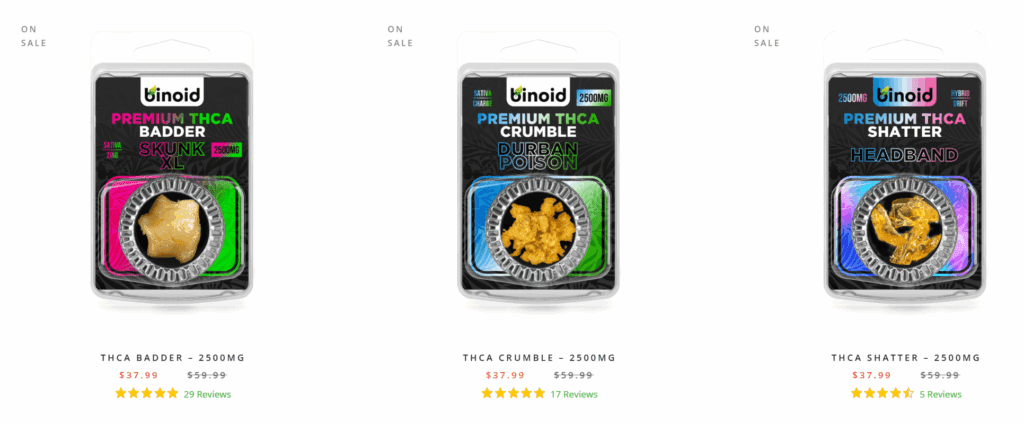
Contender #2: Concentrates
Welcome to the world of the modern alchemist, where botanical science and advanced technology converge to create hemp concentrates. This category represents the very essence of the plant, distilled down to its most potent and fundamental components. If THC-P flower is a clever remix of a classic song, then concentrates are the pure, isolated vocal and instrumental tracks, delivering a profound impact with incredible efficiency. This diverse and dazzling family of products is created by stripping away all the excess plant material—the leaves, stems, and waxes—to isolate the cannabinoid- and terpene-rich trichome glands.
The result is a product that is significantly more potent than raw flower, offering an experience that is characterized by its intensity, purity of flavor, and rapid onset. For many, concentrates represent the next frontier of the hemp experience, a way to explore the plant’s profile with unprecedented clarity and power, opening the door to a new level of appreciation and a different kind of ritual.
To start, cannabinoids are the naturally occurring chemical compounds within the hemp plant that are responsible for its wide array of effects. They achieve this by interacting with the human body’s endocannabinoid system (ECS), a complex network of receptors that helps regulate various physiological processes. The world of concentrates is built upon isolating these powerful molecules. Modern extraction technologies allow producers to not only pull these compounds from the plant but also to isolate specific ones and even convert them into other, rarer cannabinoids.
This scientific manipulation has created an incredible toolbox for formulators, allowing them to create concentrates with highly specific and targeted effect profiles. The cannabinoids most commonly found in today’s concentrates can be broadly grouped by their general psychoactive potency:
Non-Intoxicating: This group includes cannabinoids that do not produce the euphoric or “high” feeling associated with THC. Cannabidiol (CBD) is the most well-known, celebrated for its potential to promote a sense of calm and well-being. Cannabinol (CBN) is often found in concentrates designed for relaxation, while Cannabigerol (CBG) is valued for its unique properties as the “mother” cannabinoid from which others are formed.
Mild Potency: This category is perfect for those seeking a more functional and less intense psychoactive experience. Delta 10 THC is a prime example, known for delivering a clear-headed, uplifting, and energizing effect that is often compared to a Sativa strain, making it a popular choice for daytime use when focus and creativity are desired.
Moderate Potency: This group contains the most well-known and traditionally sought-after cannabinoids. Delta 9 THC is the benchmark for classic psychoactive effects. Delta 8 THC offers a milder, more body-focused version of that experience. THCA is the star player in many “raw” concentrates like diamonds and live resins, as it remains non-intoxicating until it is heated during consumption, at which point it converts into potent Delta 9 THC.
Strong Potency: Representing the cutting edge of cannabinoid science, this group features compounds known for their exceptionally high potency, intended for experienced users. THC-P (Tetrahydrocannabiphorol) has a much stronger binding affinity for the body’s receptors than Delta 9 THC, making it many times more potent. HHC (Hexahydrocannabinol) is a hydrogenated form of THC, known for its chemical stability and Delta 9 THC-like effects. These cannabinoids deliver a powerful and profound level of euphoria.
Just as with flower, the concepts of Indica, Sativa, and Hybrid are absolutely fundamental to the world of concentrates, serving as the primary guideposts for consumers to anticipate the character of a product’s effects. However, the way a strain’s profile is expressed in a concentrate is even more pronounced and pure than in flower. The extraction process, by removing all the plant material, eliminates the flavors of combustion like burning leaves and chlorophyll, allowing the strain’s unique terpene profile to shine through with unparalleled clarity. Whether a concentrate is made from the following will dictate its core identity, from its specific aroma and taste to the very nature of the experience it provides, be it deeply relaxing, creatively stimulating, or a harmonious balance of both:
Indica: Concentrates extracted from Indica-dominant strains are prized for their ability to deliver profound feelings of physical relaxation, tranquility, and serene bliss. The extraction process captures and concentrates terpenes like myrcene, linalool, and beta-caryophyllene, which are associated with calming and soothing effects. An Indica-based concentrate, such as a rosin pressed from an Ice Cream Cake strain, will offer a pure expression of that strain’s earthy, sweet, and relaxing qualities, making it an ideal choice for unwinding in the evening or settling into a state of deep, chilled-out comfort.
Sativa: Sativa-dominant concentrate are the go-to choice for users seeking an energizing, uplifting, and cerebrally-focused experience. The extraction process preserves and amplifies the bright, zesty terpenes like limonene and pinene, which are associated with mood elevation and alertness. A Sativa-based concentrate, such as a live resin extracted from a Sour Diesel strain, will provide a powerful and pure taste of citrus and fuel, accompanied by a wave of euphoric and creative energy. These concentrates are perfect for daytime use, artistic endeavors, or social situations.
Hybrid: Hybrid concentrates offer the best of both worlds, capturing the most desirable traits from their blended Indica and Sativa parentage. The resulting experience can be incredibly nuanced and multi-faceted, providing a balanced effect that can be enjoyed at any time of day. A Hybrid concentrate, such as a badder made from the GSC strain, can deliver a powerful initial wave of cerebral euphoria followed by a comfortable and relaxing body sensation. This versatility and the wide spectrum of possible effects make hybrids the most popular and diverse category in the world of concentrates.
So, at their most fundamental level, hemp/cannabis concentrates are exactly what their name implies: products in which the most desirable parts of the cannabis plant—the cannabinoids and terpenes—have been concentrated into a much smaller, more potent form. This is achieved through a variety of extraction processes that are designed to separate the resinous trichome glands from the less desirable plant material, such as leaves, stems, and stalks. The result is a product that can have a cannabinoid content ranging from 60% to over 99%, compared to the 15-30% range typically found in high-quality flower. This process of purification and amplification is the defining characteristic of all concentrates.
The methods used to achieve this separation fall into two main categories: solvent-based extraction and solventless extraction. Solvent-based methods use a chemical like butane, propane, or CO2 to dissolve the trichomes off the plant, while solventless methods use mechanical forces like heat, pressure, or agitation in ice water. This distinction is one of the most important factors in determining the final product’s character and purity.
The world of concentrates is a dazzling and often confusing landscape of different names, textures, and consistencies. While the variety can seem overwhelming, these differences are primarily the result of the specific extraction method used and the post-extraction techniques applied to the final product. Understanding these key types is the first step to becoming a knowledgeable concentrate consumer. It is also important to note that the term “Dabs” is not a specific type of concentrate itself, but rather a colloquial term for any concentrate that is consumed via a process called “dabbing,” which involves vaporizing the product on a hot surface:
Resin: This is a broad term for the sticky substance produced in the plant’s trichomes. In the context of concentrates, “resin” typically refers to a hydrocarbon extract made from dried and cured cannabis flower. It is a cost-effective and common type of concentrate, but it can sometimes lack the vibrant terpene profile of extracts made from fresh material. A more desirable form is Live Resin, which is made from plant material that was flash-frozen immediately at harvest, preserving a much wider and more authentic spectrum of terpenes, resulting in a significantly more flavorful and aromatic product.
Rosin: One of the most popular forms of solventless extract, it’s created by taking cannabis flower, kief, or hash and subjecting it to immense heat and pressure using a specialized rosin press. This simple mechanical process squeezes the resinous sap directly from the plant material without the use of any chemicals, resulting in an incredibly pure and clean final product. Similar to resin, Live Rosin is considered the premium version, created by pressing bubble hash that was made from fresh-frozen plant material, yielding the most flavorful and potent solventless experience possible.
Bubble Hash: Also known as ice water hash, this is another premier solventless concentrate. It is made by agitating cannabis plant material in a vessel of ice-cold water. The freezing temperatures cause the brittle trichome heads to snap off and separate from the plant. This trichome-rich water is then poured through a series of filtered bags with progressively finer mesh screens, which catch the trichomes while allowing the water and plant matter to pass through. The final product is a potent, sand-like concentrate that can be pressed into rosin or consumed as is.
Wax: A general term for opaque, soft concentrates that are not translucent like shatter. This consistency is achieved by whipping the extract during the purging process, which incorporates air and results in a cloudy, wax-like texture. Wax is a category that contains several more specific consistencies:
Shatter: This is one of the most iconic forms of concentrate, known for its brittle, glass-like consistency. It is typically translucent and amber or gold in color. Shatter is made using a solvent-based extraction method, and the key to its texture is that it is left undisturbed during the final purging process. While visually appealing, its hard texture can sometimes make it difficult to handle, as it can shatter into small pieces when portioned out.
Badder / Budder: These concentrates have a much softer, more malleable consistency, similar to cake batter, thick frosting, or butter. This texture is achieved by whipping the extract at a specific temperature during the purging process. The result is an opaque, creamy concentrate that is very easy to scoop and handle with a dab tool, making it one of the most popular and user-friendly consistencies on the market.
Crumble: A drier, more brittle version of wax. It has a honeycomb-like or crumbly texture that easily breaks apart. This consistency is achieved by using lower temperatures and longer vacuum purging times, which removes more moisture and results in a less viscous, more solidified final product. While potent, its crumbly nature can sometimes make it a bit challenging to handle without it breaking into small pieces.
Diamonds: Often considered the “caviar” of concentrates, diamonds are crystalline structures of nearly pure, isolated THCA (or sometimes other cannabinoids like CBDA). The process involves using a solvent to create a supersaturated solution of cannabinoids, which, under specific conditions of temperature and pressure over a period of weeks, will cause the THCA to crystallize and form solid “diamonds.” These are incredibly potent but lack flavor on their own.
Crystalline: This is the purest form of a concentrate available, consisting of a single, isolated cannabinoid in its crystalline form. Products like THCA Crystalline or CBD Isolate are fine white powders that can reach over 99.9% purity. While they offer the highest potency of a single molecule, they contain no terpenes and therefore lack any flavor, aroma, or the synergistic benefits of the entourage effect. They are often used as a base ingredient to add potency to other products.
The legal status of hemp-derived concentrates in the United States is governed by the same federal law that applies to THCA flower: the 2018 Farm Bill. This legislation legalized hemp and its derivatives, defining them as any product sourced from the Cannabis sativa L. plant that contains a Delta 9 THC concentration of not more than 0.3% by dry weight. This has created a legal pathway for the production and sale of a wide variety of concentrates, especially those that are high in THCA or alternative cannabinoids like Delta 8 THC and HHC. As long as the source material is compliant hemp and the final product’s Delta 9 THC level remains below the 0.3% threshold, these concentrates are considered federally legal. For a product like THCA diamonds, which is over 99% pure THCA with almost no Delta 9 THC, this is a straightforward issue of compliance.
However, the application of the “dry weight basis” rule to a viscous, non-dry product like an oil or wax is a subject of legal ambiguity and varying interpretation. Furthermore, the legal landscape is significantly complicated by a patchwork of state-level laws. In response to the rise of intoxicating hemp products, many states have enacted their own, more restrictive regulations. Some states have banned specific cannabinoids like Delta 8 THC outright, while others have adopted a “total THC” standard, which would make high-THCA concentrates illegal within their borders. This creates a confusing and inconsistent legal environment where a product may be legal at the federal level but illegal in a specific state. Therefore, it is absolutely essential for consumers to thoroughly research and understand the laws in their own state before purchasing or possessing any hemp-derived concentrates.
The overall effects of consuming concentrates are defined by their incredible potency and rapid onset. When a concentrate is dabbed or vaporized, the user is inhaling a vapor that is almost entirely composed of active cannabinoids and terpenes. This leads to an extremely efficient delivery to the bloodstream and brain, with effects that are felt almost instantaneously and with a profound intensity that flower simply cannot match. The experience is often described as being very “clean” and direct, as there is no combustion of plant material to muddy the effects. The “high” from a concentrate can be intensely euphoric and powerful, and the character of that high is very clearly defined by the strain’s terpene profile.
A dab of Sativa live resin, for example, can produce a sharp, electrifying burst of creative energy, while a dab of Indica live rosin can feel like being wrapped in a warm, heavy blanket of relaxation. Due to the high potency, the effects can be overwhelming for novice users, and regular consumption can lead to a rapid increase in tolerance. For experienced users, however, concentrates offer an unparalleled level of efficiency and a powerful, flavorful journey into the heart of the cannabis experience.
Pros & Cons
The world of concentrates offers a compelling proposition of potency and purity, presenting a unique set of advantages that appeal to many experienced cannabis users. However, this high-octane experience also comes with its own set of drawbacks and a steeper learning curve. A balanced examination of the pros and cons is essential to determine if this advanced category of products is the right fit for you.
Pros:
Unmatched Potency and Efficiency: The most significant advantage of concentrates is their sheer potency. With cannabinoid concentrations often exceeding 70-90%, they offer an incredibly powerful experience from a very small amount of product. This efficiency is ideal for experienced users or those with a high tolerance who need a strong effect to find their desired level of bliss. A single dab can provide an effect that might take an entire bowl or joint of flower to achieve.
Pure, Intense Flavor Profiles: High-quality concentrates, particularly live resin and live rosin, are celebrated for their exceptional flavor. Because all the extraneous plant matter has been removed, what remains is a pure expression of the strain’s terpenes. This results in an incredibly clean, intense, and nuanced flavor profile that is unadulterated by the taste of burning leaves, offering a “high-definition” taste experience for connoisseurs.
Rapid, Powerful Onset of Effects: Dabbing or vaporizing a concentrate delivers a highly concentrated dose of cannabinoids to the lungs for near-instantaneous absorption into the bloodstream. The onset of effects is incredibly rapid and powerful, making it a very effective method for users who desire an immediate and profound experience. This speed can be highly desirable for those seeking a quick transition into a state of euphoric relaxation.
A “Cleaner” Inhalation Experience: When vaporized correctly at the right temperature, concentrates do not combust. This means the user is inhaling a pure vapor of cannabinoids and terpenes, without the tar, carcinogens, and other irritants that are created when plant material is burned. For many health-conscious users, this is a major advantage over smoking flower, as it is significantly less harsh on the respiratory system.
Cost-Effective for High-Tolerance Users: While the initial price per gram of a concentrate is higher than flower, its extreme potency can make it more economical for heavy users over the long term. Because such a small amount is needed to achieve the desired effect, a single gram of concentrate can last much longer than a gram of flower for someone with a high tolerance. This can lead to a lower overall cost per session.
Discreet Odor: While dabbing is not entirely odorless, the vapor produced has a much lighter, less pungent aroma than the smoke from flower. The smell is primarily that of the terpenes, which is often aromatic and pleasant, and it dissipates very quickly without clinging to fabrics or permeating a room in the same way that smoke does. This makes it a more discreet option for home use.
Versatility in Consumption: While dabbing is the most common method, concentrates can be very versatile. They can be loaded into specialized vape pens or “dab pens” for portable use, they can be added to the top of a bowl of flower to significantly increase its potency (a “twaxed” bowl), or they can even be used in edibles after being decarboxylated. This flexibility allows users to enjoy them in various ways.
Long Shelf Life: Due to their low amount of organic plant matter and high concentration of stable cannabinoids, concentrates are very stable products. When stored properly in an airtight, light-proof container in a cool place, they can maintain their potency and flavor for a very long time, much longer than flower, which can dry out and lose its aroma over time.
Precise Expression of Strain Genetics: Concentrates, especially those made from a single source, can offer a very precise and powerful representation of a particular strain’s characteristics. The high concentration of terpenes provides a clear and unambiguous expression of the strain’s aroma and flavor profile, allowing users to deeply explore the unique nuances of different cannabis genetics.
The Ritual and Craft for Hobbyists: For some, the process of dabbing itself becomes a hobby and a ritual. Learning the intricacies of heating the nail, handling the different consistencies of concentrates, and collecting different glass rigs and accessories can be a deeply engaging and enjoyable part of the experience. It appeals to the tinkerer and the connoisseur who enjoys the craft and precision of the process.
Cons:
Overwhelming Potency for Beginners: The extreme potency of concentrates is a double-edged sword. For novice users or those with a low tolerance, a single dab can be intensely overwhelming, leading to a very uncomfortable and unpleasant experience. The power of concentrates should be respected, and they are generally not recommended for people who are new to cannabinoids.
High Barrier to Entry (Equipment and Cost): To properly consume most concentrates, a significant investment in specialized equipment is required. A basic dab rig setup, including the rig, a quartz banger, a carb cap, a dab tool, and a butane torch, can be expensive and intimidating. This high barrier to entry can make it inaccessible for casual or curious users.
Steep Learning Curve: Dabbing is a more complex process than simply lighting a bowl. There is a learning curve to figuring out the correct temperature to heat the nail (too hot and you burn the terpenes, too cool and you waste the concentrate), how to handle the sticky material, and how to operate the rig correctly. This process can be daunting and potentially dangerous (due to the use of a torch) for the uninitiated.
Potential for Rapid Tolerance Increase: Due to the highly concentrated doses of cannabinoids being consumed, regular use of concentrates can lead to a very rapid increase in a user’s tolerance. This means that over time, they will need to consume more and more to achieve the same effects. This can make it difficult to feel the effects of lower-potency products like flower and can lead to increased consumption costs.
How to Go About Choosing Which Option
Navigating the choice between the potent, hybrid experience of THC-P Flower and the pure, concentrated power of various extracts is a decision that should be guided by a clear understanding of your personal tolerance, lifestyle, and what you ultimately seek from your journey into elevated sensations. There is no single “better” product; rather, there is only the option that more safely and enjoyably aligns with your individual needs and preferences.
To make an informed decision, it is crucial to conduct an honest self-assessment, particularly regarding your experience with high-potency cannabinoids and your comfort level with different consumption rituals. Do you prefer the full-bodied, synergistic effect of a plant-based product, or the direct, unadulterated intensity of a pure extract delivered with precision? Are you more inclined towards a familiar, tactile ritual, or do you value the streamlined efficiency and potent punch of concentrates? Answering these questions will illuminate the most suitable path for your exploration.
To further simplify the decision-making process, consider the following key factors:
Your Tolerance Level (Crucial First Step): Be brutally honest with yourself about your experience and tolerance with intoxicating cannabinoids. If you are a beginner or have a low tolerance, neither of these options is truly suitable as a starting point. If you have some experience but are not a seasoned, high-tolerance user, a concentrate with a milder cannabinoid, or perhaps a micro-dose of a more potent one, is a safer bet than THC-P flower. For those with a very high tolerance, both offer powerful experiences, but the type of power differs.
Desired Intensity and Onset: Do you prefer an immediate, intense, and often shorter-lived peak (characteristic of many concentrates, especially dabs), or a powerful yet potentially more nuanced and sustained experience that might take a few moments longer to fully develop (often associated with THC-P flower)? Your preferred effect curve should guide your choice.
The Consumption Ritual and Equipment: Are you drawn to the classic, tactile ritual of grinding, packing, and consuming flower, with all its sensory engagement? If so, THC-P flower is the clear choice. Or are you open to, or already familiar with, the more technical and involved process of dabbing, which requires specialized equipment and a steeper learning curve? The required hardware and your comfort level with it are significant considerations.
Flavor and Purity Preference: Do you enjoy the complex, earthy, and often smoky flavor that comes from combusting or vaporizing plant material, along with the terpenes? THC-P flower delivers this. Or do you crave the absolute purest, unadulterated expression of a strain’s terpene profile, free from any plant matter flavors, as found in high-quality live resins or rosins? Concentrates often provide a cleaner, more intense flavor.
Discretion and Portability: If discretion is a primary concern, and you need a product that is easy to transport and use quickly without leaving a lingering odor, then concentrates in a portable dab pen or a carefully managed dab rig setup might be more suitable than smoking flower, which can produce more noticeable aromas.
Cost-Effectiveness Over Time: While concentrates often have a higher price tag per gram, their extreme potency means that a very small amount is needed per session. For a high-tolerance user, this can translate to a more economical choice over time. THC-P flower, while also potent, might require larger quantities over time to achieve the same overall cannabinoid intake as concentrates.
Legal Landscape in Your State: This is a non-negotiable factor. Both THC-P flower and various concentrates exist in a complex legal gray area. Before making any purchase, you must verify the specific state and local laws regarding the possession and consumption of these products, as legality can vary wildly.
The “Entourage Effect” vs. Targeted Cannabinoids: THC-P flower offers a more traditional entourage effect, combining THC-P with the base flower’s natural CBD, CBG, and terpenes. Many concentrates, especially full-spectrum live resins and rosins, also offer this. However, if you are interested in exploring highly targeted, isolated cannabinoids or very specific blends without the full breadth of plant compounds, the concentrate market provides endless possibilities.
|
Feature |
THC-P Flower |
Concentrates |
|---|---|---|
|
Tolerance Required |
Very High (Extreme Potency) |
High to Very High (Potency Varies Greatly by Type) |
|
Dosing Control |
Difficult (Variable Burn/Vaporization) |
Precise (with practice and proper tools) |
|
Onset of Effects |
Fast to Moderate (Minutes) |
Very Fast to Instantaneous (Seconds to Minutes) |
|
Duration of Effects |
Long (Several Hours) |
Moderate to Long (1-3+ Hours, depending on amount) |
|
Required Equipment |
Grinder, Lighter/Hemp Wick, Pipe/Bong/Papers (familiar) |
Dab Rig, Torch, Dab Tool, Carb Cap (specialized) / Vape Pen |
|
Learning Curve |
Low (Familiar Flower Consumption) |
Moderate to High (Dabbing technique, equipment setup) |
|
Flavor Purity |
Good (Natural Flower Terpenes) |
Excellent (Pure Terpene Expression, No Combustion) |
|
Cannabinoid Versatility |
Primarily THC-P + Base Flower’s Profile |
Vast (Any Cannabinoid, Isolate, or Blend) |
|
Discretion |
Lower (Smoke, Stronger Aroma) |
Higher (Vapor, Quicker Dissipation) |
|
Upfront Cost |
Moderate (Product only) |
High (Equipment + Product) |
|
Long-Term Cost |
Moderate (More product needed for same effect over time) |
Potentially Lower (Efficiency, smaller amounts needed) |
|
Entourage Effect |
Strong (Base flower + THC-P) |
Strong (Full-spectrum extracts) to Weak (Isolates) |
|
Manufacturing Nature |
Infused (Natural base + Lab-created cannabinoid) |
Extracted (Directly from plant, solvent or solventless) |
The Alchemist’s Table: Choosing Your Essence
The choice between an infused THC-P flower of immense power and the highly refined, pure essence of concentrates is not merely a practical decision; it is a profound reflection of the experience one seeks to cultivate and the nature of their journey into elevated sensations. One path offers the comfort of a familiar, tactile ritual, where the natural character of a plant is imbued with an extraordinary new level of intensity, demanding a respectful approach and careful moderation. The other, however, beckons towards a direct communion with the plant’s most potent compounds, offering a kaleidoscope of experiences crafted by the precise hand of scientific extraction and tailored for immediate, powerful impact.
Ultimately, neither category stands as universally superior; rather, the true discernment lies in harmonizing your unique preferences, acknowledging your personal limits, and confidently selecting the form that will most safely and joyfully unlock the vast and wonderful landscape of personal bliss.
TO BUY THC-P FLOWER CLICK HERE
Recommended products
-
THCA Flower – Indoor Exotics – Gold Line
$37.99$69.99 -
THCA Flower – Mystery Reserve
$41.99$79.99 -
THCA Flower – Platinum Line
$49.99$79.99 -
THCA Smalls
$149.99$256.99

